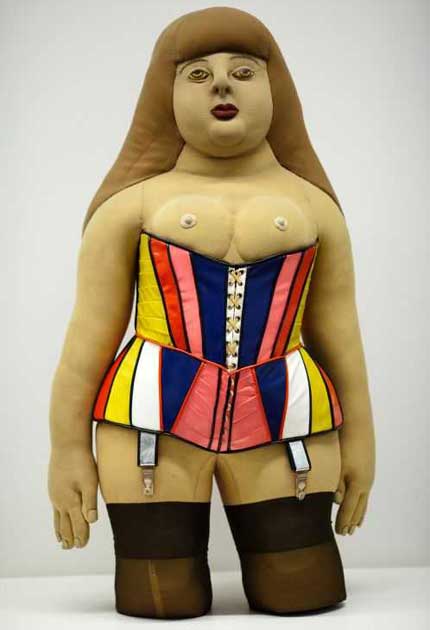Jann Haworth, Art Gallery, Wolverhampton
Pop Art given a good stuffing

Your support helps us to tell the story
From reproductive rights to climate change to Big Tech, The Independent is on the ground when the story is developing. Whether it's investigating the financials of Elon Musk's pro-Trump PAC or producing our latest documentary, 'The A Word', which shines a light on the American women fighting for reproductive rights, we know how important it is to parse out the facts from the messaging.
At such a critical moment in US history, we need reporters on the ground. Your donation allows us to keep sending journalists to speak to both sides of the story.
The Independent is trusted by Americans across the entire political spectrum. And unlike many other quality news outlets, we choose not to lock Americans out of our reporting and analysis with paywalls. We believe quality journalism should be available to everyone, paid for by those who can afford it.
Your support makes all the difference.Does the Pop Art movement of the 1960s represent a battle between the Unserious and the Overserious? It can look that way. Nothing is more shockingly dissimilar to a silkscreen of a Campbell's soup can by Warhol from the 1960s than a giant work of monochromatic abstraction by Robert Motherwell from the 1950s. Abstract Expressionism seems to have almost no common ground with Pop. One seems to smile and dance around out in the world, while the other glooms and navel-gazes with an enormous sense of macho self-importance.
And that's the state of mind I carried with me into this retrospective by the Pop Artist Jann Haworth in Wolverhampton, which principally encompasses work from two decades, the 1960s and the past ten years. That it would be fun, fun, fun all the way. (You don't know the name? You should. She co-produced the Sgt. Pepper album cover. Though American by birth – she has a home in California now – she lived in Britain for a good part of her life. She even trained here as an artist).
And, in part, that is true. The gallery is a cheerful, triangular space. The works – two- and three-dimensional – are either on the walls or set against the walls. They are bright, brash and funny. They don't exactly crowd out the space, but they do fully occupy it – rather in the way that a house is fully occupied by its own furniture. Companionable. At one with you. Not art to teach you a lesson about your own ignorance of art. And, in part, it manages to be so companionable because it pokes fun at things. It makes fairly ordinary things – a charm bracelet, a ring – seem delightfully strange by blowing them up to giant size or making them out of soft materials. It makes us think back to the history of the art of the 20th century, and reflect upon the fairly rigid and humourless way art's story has often been told. It points out to us that abstraction, when seen in a slightly different way, is also decoration, and that the decorative is often playful. She re-makes a Futurist painting by Gino Severini out of compacted triangles of sequins. It feels as if she has pricked a bubble. In fact, you feel that a lot of what she has done has consisted of her taking shiny pins and pricking them into male backsides in order to watch them deflate. She reminds us that the history of Pop Art was largely the history of males – as was the history of Abstract Expressionsm, too.
One thing that Jann Haworth does is to soften things up, to draw our attention to what we regard as the feminine side of things in order that we can then ask ourselves: why should women be ghettoized in this way? What's necessarily so feminine about stitching one bit of stuff to another bit of stuff – or so masculine about heaving sheets of cold metal about? She makes sculptures of people – a maid, an old man, a granny slumped in a chair. But she doesn't make them out of bronze. She's not in the business of monumentalizing or heroicising the human form. She makes them out of soft materials – fabric, with stuffing. This gives them a yielding playfulness. They become the stuff of a kind of touching, nostalgia-soaked comedy. She gathers them in little sets, as if they are about to be filmed. Her childhood was spent wandering around film sets, and much of her work refers to the heroes and heroines of the cinema: W C Fields, Shirley Temple, Mae West and others. In short, she has fun at the expense of quite a lot of us.
No wonder the gallery was teeming with kids, those pesky anarchists, when I walked around.
To 10 April 2010 (01902 552 055)
Join our commenting forum
Join thought-provoking conversations, follow other Independent readers and see their replies
Comments